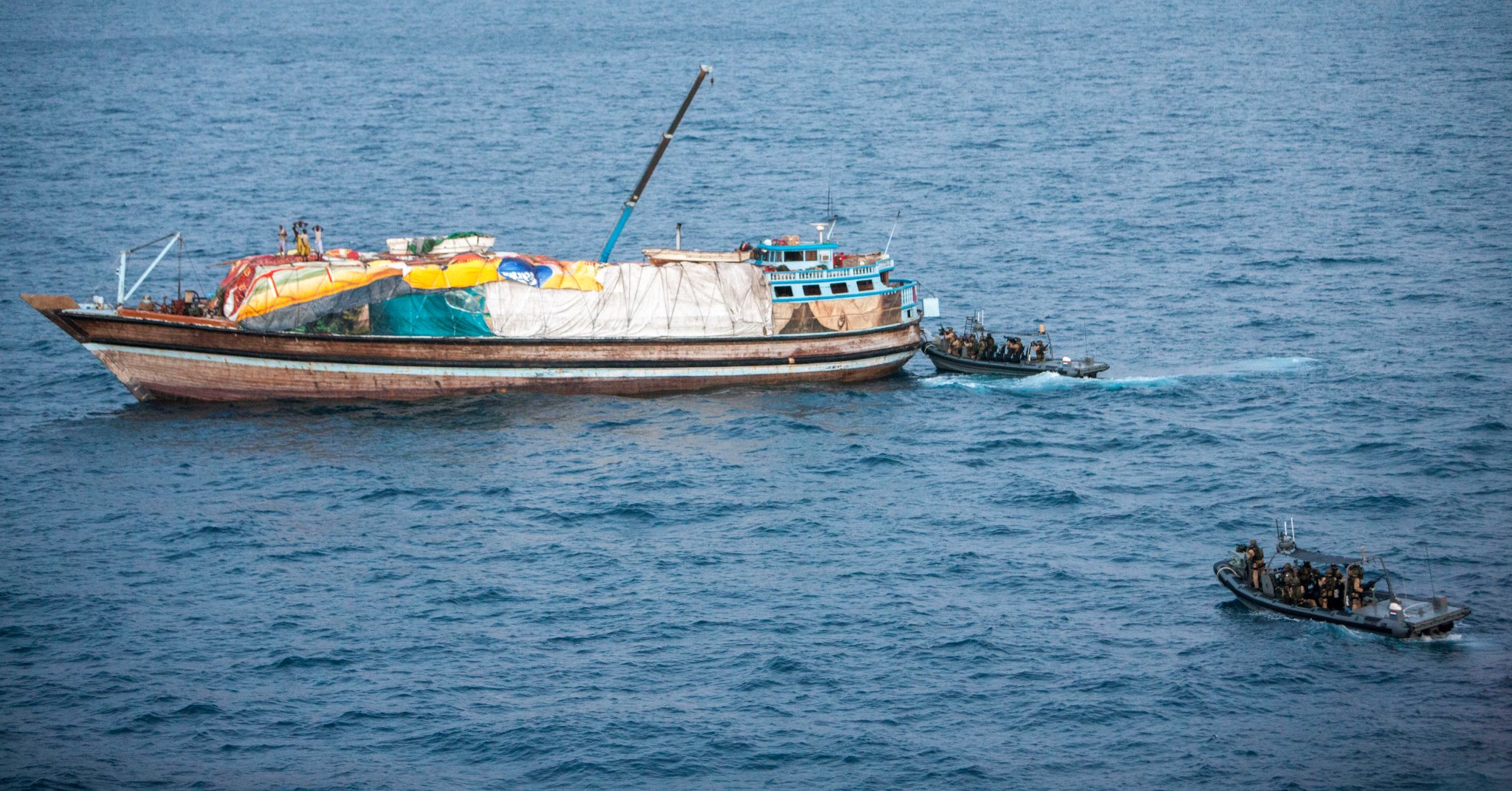NATO Shipping Centre Appeals For Merchant Shipping Support in Identifying HRA Local Ships
NATO Shipping Centre has made an appeal to the merchant community for any and all information reports on local shipping that may be considered suspicious activity in the HRA. The proliferation of dhows, skiffs and whalers in the area allows pirates to blend in among the boating traffic, thereby presenting thmeselve as fishing or trading vessels.
 |
|
NATO Forces Disrupt Suspect Pirate Dhow - File Photo: NATO
|
In order for the NATO Shipping Centre (NSC) to provide guidance and enable the naval forces to use assets in a more effiicient and effective manner, merchant vessels are asked to provide detailed and specific information which is extremely valuable in the fight against piracy.
The guidance goes on to say that local ships in the HRA are often not registered and that as good as possible description of local ships, but not pictures, is very important to the effort.
NSC has issued an 'Identification Guide' designed to enhance background knowledge and increase understanding of local traffic, presumably to avoid mistaken identity following recent incidents where innocent fishing vessels have been fired upon this year.
The goal of the guide is to engender standardised reporting of local shipping traffic in the HRA. The Identification Guide is free to download HERE and the quick reference Dhow and Skiff Recognition Chart 2012 can be downloaded HERE.
As much as this is a worthwhile endeavour, the appeal is not made as all-inclusive as it could be. The appeal could also be directed to PMSCs who have teams onboard many vessels transiting the HRA, and often have a military background with an understanding of the need for accurate identification and reporting. Whilst embarked on commercial vessels, such teams already provide such information to their respective ops room staff of their parent company.
By including PMSCs in the appeal, it would allow the military authorities a level of engagement missing from the collaborative efforts in the HRA to date.
This measure would not endorse the PMSCs per se, but would create inroads in establishing a wider maritime picture and vastly increase the situational awareness that is clearly the desired result behind this appeal. OCEANUSLive provides such a platform and is considered a trusted source of information which in turns supports the efforts of IMB, and the military authorities operating in the HRA.
The guide provides details of the 3 common types of local ships used by "Somali criminals".
Terminology is included for clarification and the problems with the flying of flags not only of the registered State, but also of the destination State; the matter of the inability to track dhows entering and leaving regional ports. The guide shows a hand-drawn depiction of the trade routes used by regional dhows.
The types of dhow are difficult to identify according to their build style or origin, but NSC has included drawings and pictures as examples of possible dhows that may be seen, but further requests descriptions are forwarded of any dhow not categorised in the guide. A few categories are:
- Shu'ai
- Yemeni
- Jelbut (or Jalibut) square and round stern
- Boum
- Sambuq
A few others are mentioned and skiffs and whalers are included for completeness.
The format of the report is available in the guide documentation.
A quick reference (right) via Gulf News - click on image to enlarge.
 Subscribe to our newsletter. Receive a weekly round-up of all piracy-related news.
Subscribe to our newsletter. Receive a weekly round-up of all piracy-related news.
OCEANUSLive.org
Information, Security, Safety; Shared
Submitted by Team@oceanuslive.org